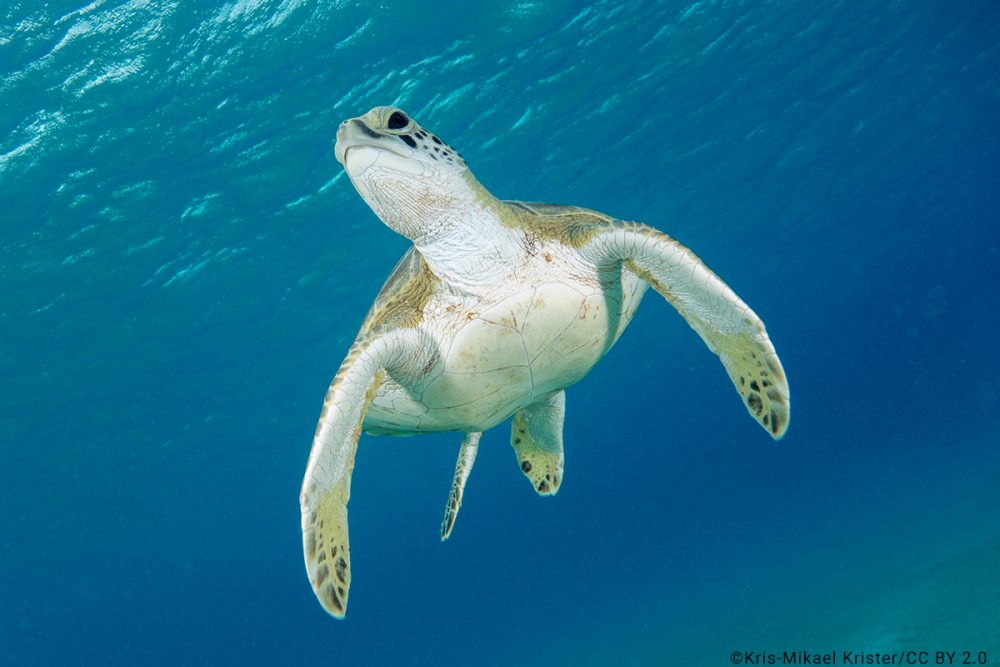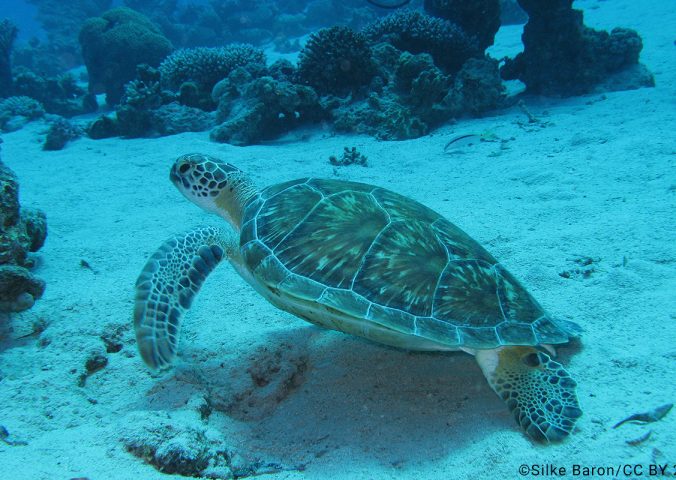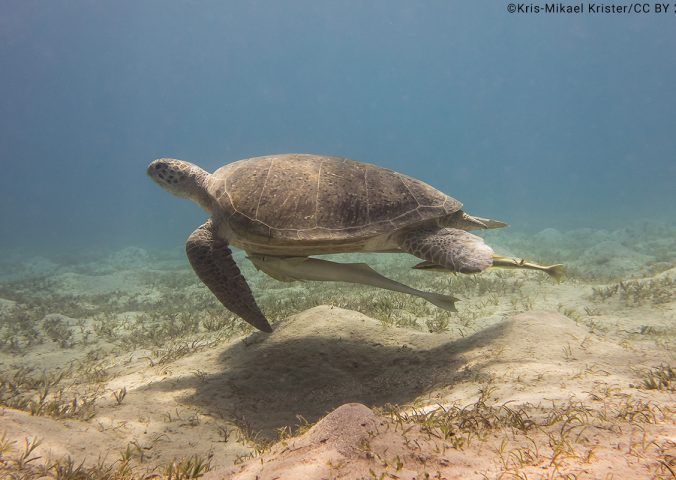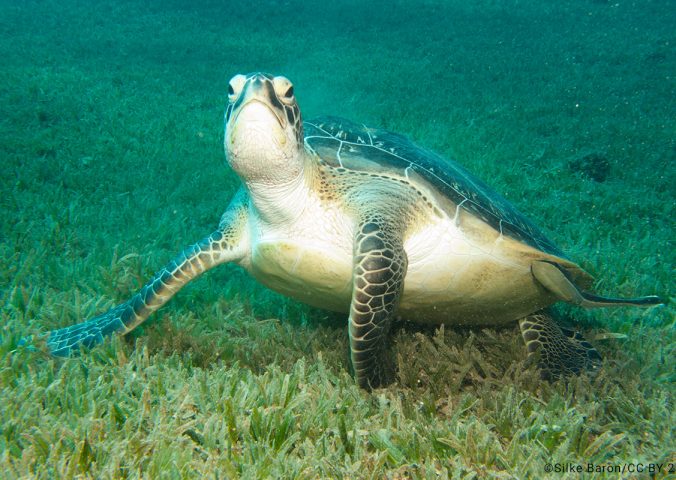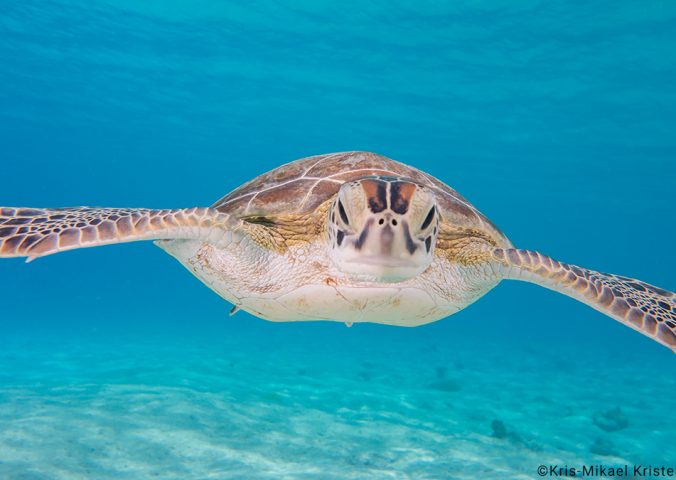About
The green turtle is a truly global species, occurring across the tropics and subtropics. Females show the incredible behaviour of natal homing, returning to the beaches where they hatched to lay their own eggs!
Females can lay more than 100 eggs in each nest, and all hatchlings will emerge from the nest at the same time, scurrying towards the sea in what is commonly known as a “nest explosion”. Unlike in human development, the sex of hatchling green turtles is dependent upon the temperature of the nest, and warmer nests tends to lead to a greater proportion of female hatchlings.
The green turtle is a unique and highly evolutionarily distinct species. The green turtle is the only species in its genus and diverged from all other living turtles more than 30 million years ago. This is around the time humans last shared a common ancestor with baboons!
Unfortunately, this species suffering a drastic population decline. This decline is driven by hunting, egg collection, bycatch in fisheries, and beach erosion, along with many other threats across their range.
The green turtle is listed as Critically Endangered by the IUCN Red List and is listed on CITES Appendix I. There are a number of conservation programmes running small schemes to protect their local nesting turtles, but there are also international treaties and agreements to stop hunting and trade, drive public awareness and establish marine protected areas.
- Order: Testudines
- Family: Cheloniidae
- Population: Unknown
- Trend: decreasing
- Size: 1.5m
- Weight: 130kg
EDGE Score
Distribution
This species has a circumglobal distribution throughout tropical and subtropical waters of the Atlantic, Indian and Pacific Ocean. They nest in at least 80 countries.
Habitat and Ecology
Green Turtles nest on sandy beaches throughout the tropics and subtropics. Like other sea turtles, they are highly migratory and depend on a wide variety of regions and habitats during their lifetime. They consume large amounts of algae, reach sexual maturity around the age of 20 and live to around 80 years old.
